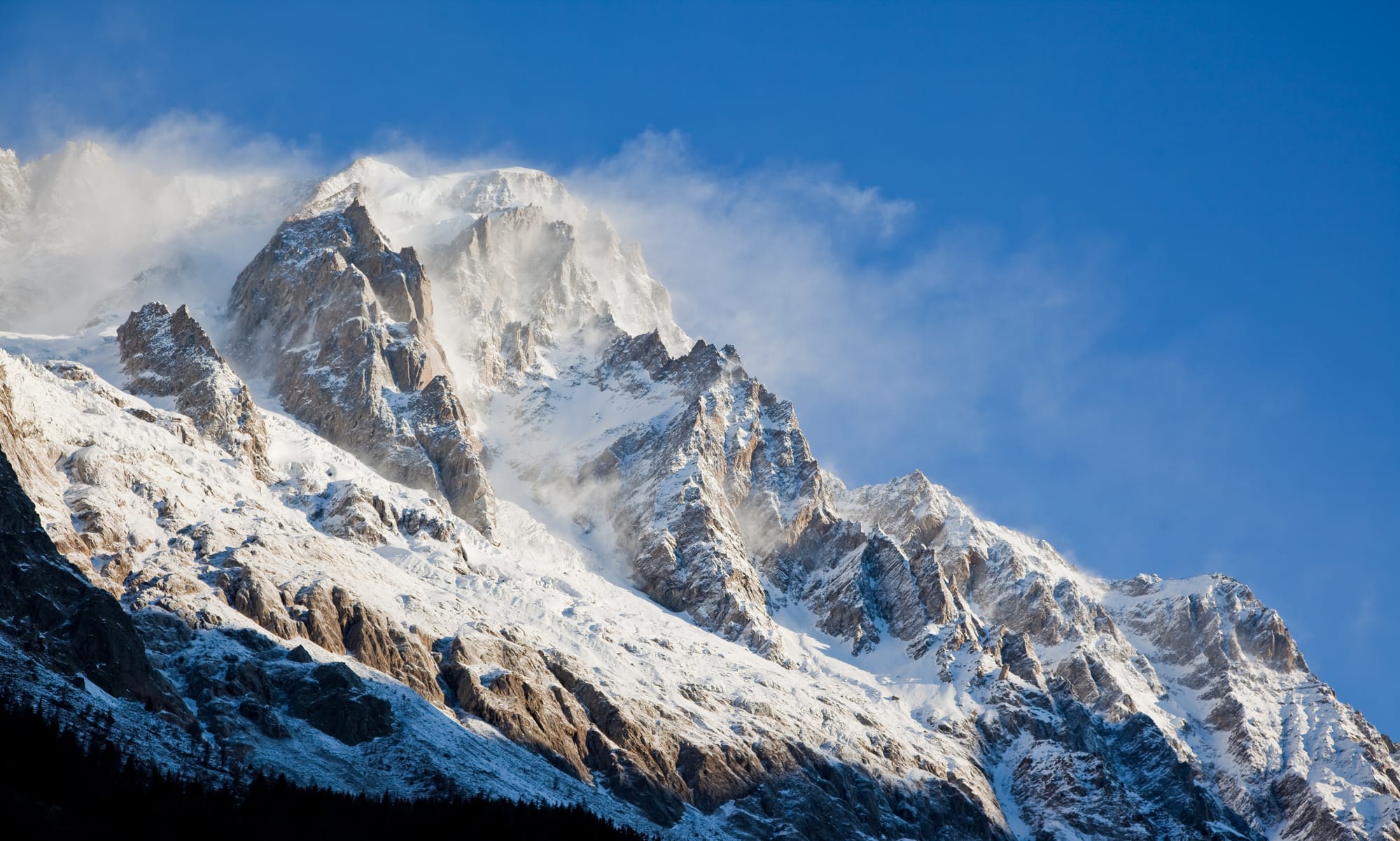Exploring Mont Blanc began in the 18th century when scientists and mountaineers set out to conquer this peak. This historic ascent paved the way for many other expeditions and sparked the interest of mountaineers worldwide. Over the years, many routes have been mapped out, and refuges have been built to facilitate the ascent of Mont ►
Exploring Mont Blanc began in the 18th century when scientists and mountaineers set out to conquer this peak. This historic ascent paved the way for many other expeditions and sparked the interest of mountaineers worldwide. Over the years, many routes have been mapped out, and refuges have been built to facilitate the ascent of Mont Blanc.
In Mont Blanc, the Mer de Glace is an alpine glacier located on the north face of the Mont Blanc massif. This glacier forms and unites three smaller glaciers: the Tacul, Leschaux and Talèfre. It is seven kilometers long, its thickness is about two hundred meters, and its surface area is about forty square kilometers. The Mer de Glace is the second largest glacier in the Alps, after the Aletsch Glacier. Its summit reaches a height of about 2,140 meters. Tourists can easily access it thanks to the Montenvers Railway. The Montenvers site is just above the glacier's tip and offers a view of the Mer de Glace. Experienced hikers can embark on the ascent of Mont Blanc. This expedition requires good physical condition and adequate preparation. You will have the opportunity to walk on glaciers and cross ridges.
For those who prefer a less extreme experience, plenty of other activities exist in the area. For example, hiking, mountain biking on the many well-marked trails, relaxing in the spas or discovering the local fauna and flora during nature walks.
The Mont Blanc massif could be a better environment in terms of flora. Acidic soils and steep, glacier-smoothed slopes characterize Mont Blanc. The most typical vegetation level of the Espace Mont Blanc is the subalpine level, dominated by coniferous forests, mainly spruce and larch—alpine plain characterized by meadows. The alpine meadow is home to many species, including the two substitute plants Stemless Gentiana and Gentian Crusius, the famous Edelweiss and the rare bellflower of Titus. Among the few plants found in the snow level are the Glacier Buttercup and the Two-flowered Saxifrage.
You can also discover the flora of the Espace Mont Blanc by visiting one of its three alpine gardens. However, the alpine gardens can be helpful because the plants are classified and easily identified.
The fauna of the Espace Mont-Blanc is rich and varied.
Like flora, fauna is also distributed according to altitude. Some species, such as foxes, explore their territories and venture far into different environments. This is the case of foxes, found not only in valley towns but also in high-altitude meadows and chamois, which live in grasslands and forests. The subalpine plains are home to two other large herbivores: deer and roe deer. Red squirrels, red woodpeckers, green woodpeckers, and black woodpeckers are often found in the same environment.
In winter, the ski areas of Chamonix and the surrounding area offer a wide variety of slopes for all levels and the off-piste regions for the more adventurous. The slopes can be skied, snowboarded, or even snowshoeing.
For those who like to fly, paraglide, or hang gliding, it is possible to admire the mountains from above.
For a relaxing time, you can take a cable car ride or cogwheel train ride to enjoy the panoramic views.
Visit villages such as Chamonix, Sallanches, Passy, Cordon, Saint-Gervais or Megève to taste the delicious mountain cuisine. Have the opportunity to visit two exceptional villages of character, labeled Most Beautiful Villages of France, in Combloux Bonneval-sur-Arc and Yvoire. Many attractions, such as mountain lakes and waterfalls, are close to Mont Blanc. The Dard waterfall is located near the entrance to the tunnel under Mont Blanc. In the middle of the greenery, the water is tormented and shimmering.
To start your trip, head to the starting point in Chamonix, an alpine town at the foot of Mont Blanc. Once in Chamonix, take the Aiguille du Midi cable car, which will take you to an altitude of 3,842 meters. Enjoy panoramic views of the surrounding peaks, glaciers, and valleys from here. ◄
